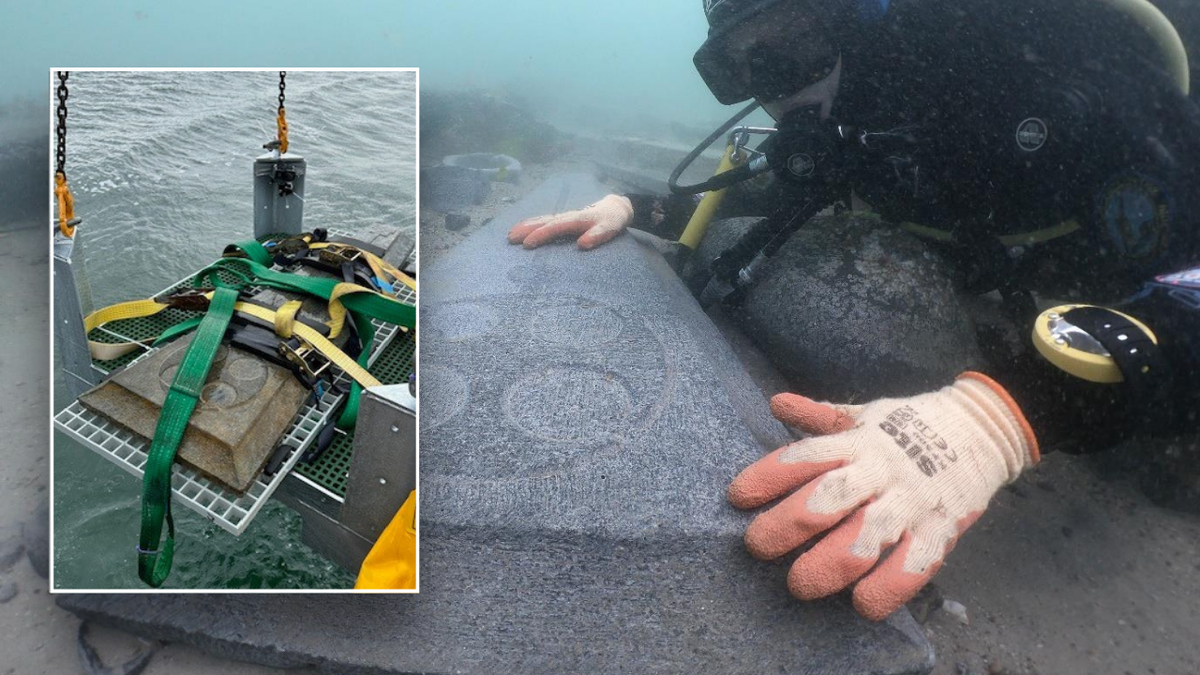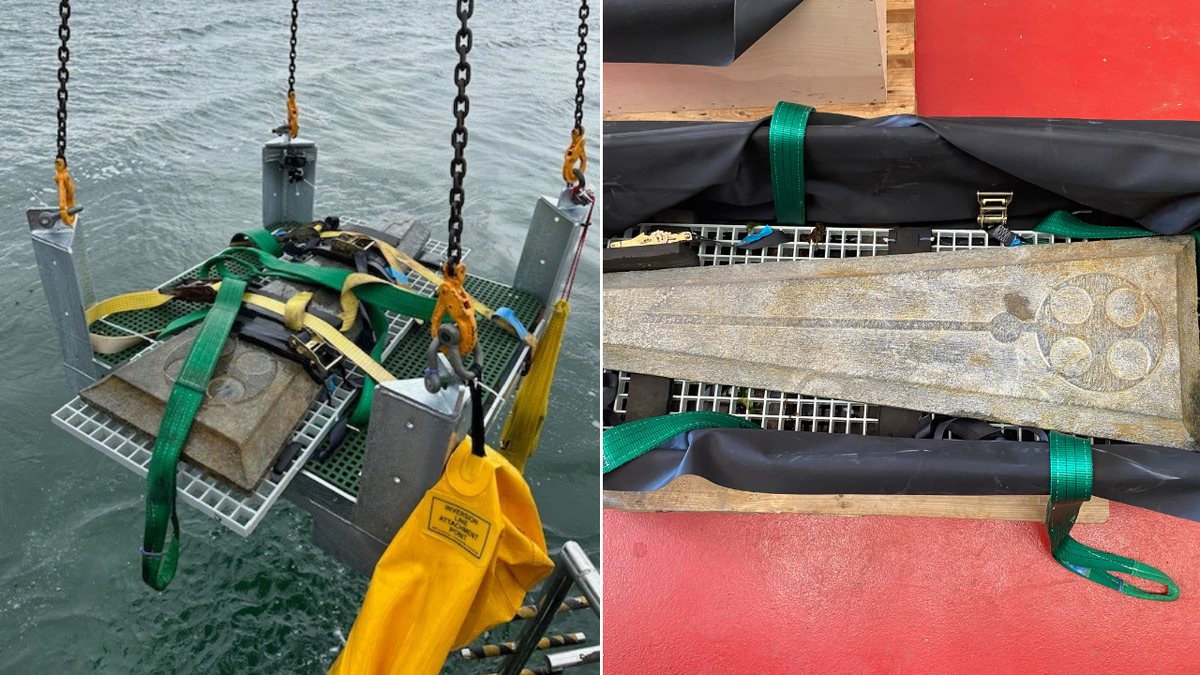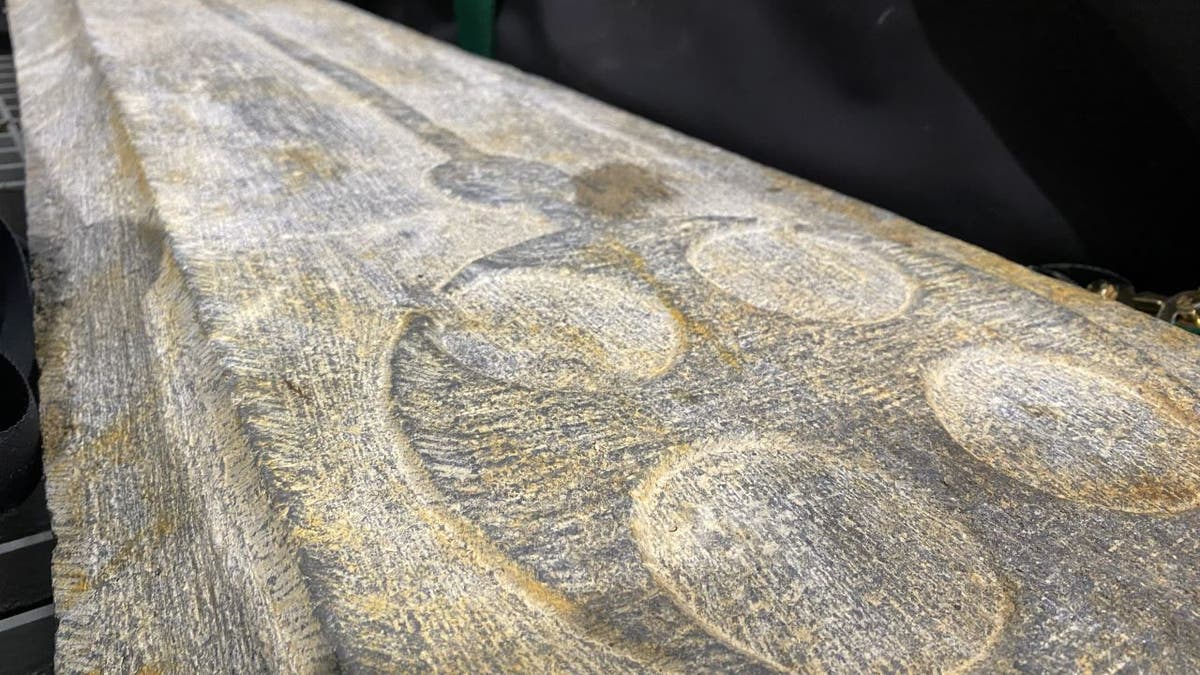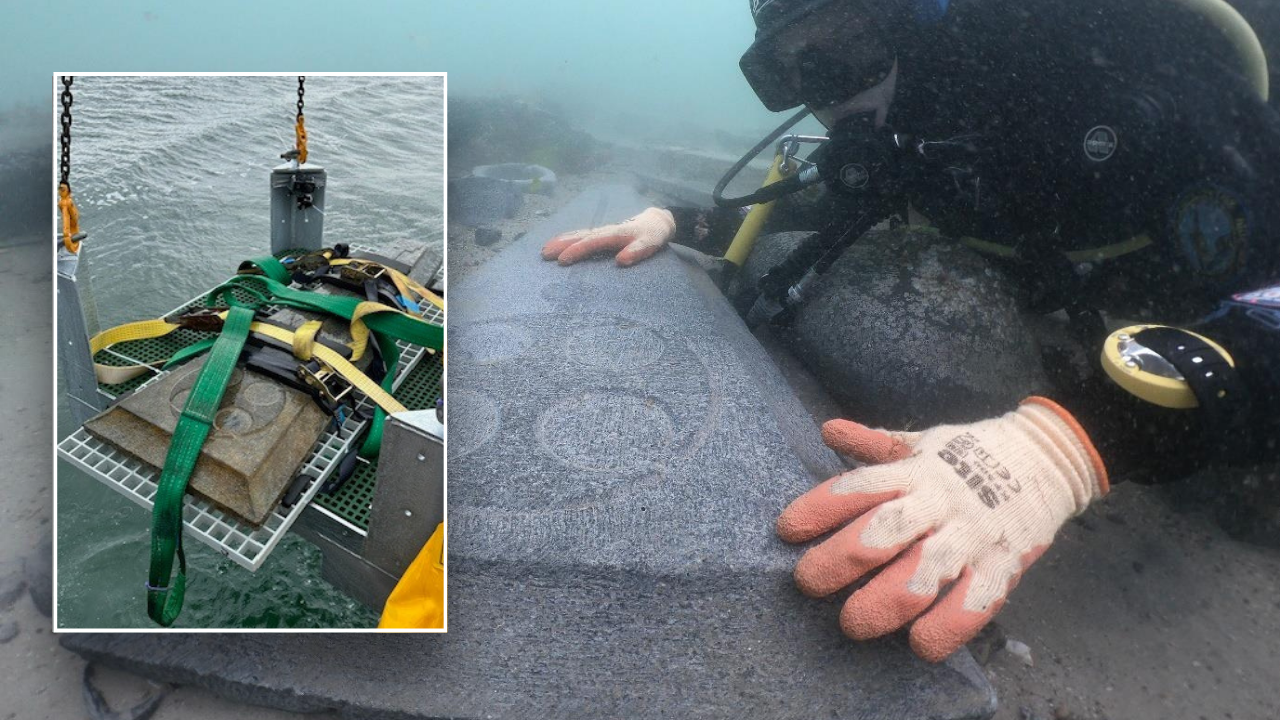British archaeologists recently discovered strange medieval tombstones during a search for an ancient shipwreck.
Bournemouth University announced the discovery in a press release on Friday. The gravestones were found in Studland Bay, off the coast of Dorset, and are thought to have been at the bottom of the English Channel for 800 years.
“The carved slabs of Purbeck marble were among the cargo of the oldest historic shipwreck in England, which sank off the coast of Dorset during the reign of Henry III in the 13th century,” the press release explained. Henry III, the son of King John, assumed the throne in 1216 and ruled until his death in 1272.
Photographs show that the grave’s slabs have remained well preserved over the centuries, although one of the slabs was covered in barnacles.
Quarry workers just doing their job make prehistoric finds

Divers recently found tombstones that had been at the bottom of the English Channel for 800 years. (Bournemouth University)
Marine archaeologists worked for more than two hours to bring the stones back to the surface last Tuesday.
“One of the immaculately preserved panels is one and a half meters long and weighs approximately 70 kilograms,” the press release explained. “The other, much larger slab is divided into two pieces, measuring two meters long and weighing about 200 kilograms.” The panels weigh approximately 154 lbs and 440 lbs respectively.
The massive tombstones were likely dedicated to important members of the clergy, who were venerated in medieval English society.
The statement added: “They both bear engravings of Christian crosses that were common in the 13th century, and the research team believes they were intended to serve as coffin covers or memorials to individuals of high standing in the clergy.”
Researchers in Michigan have discovered a strange shipwreck dating back to 1909 at the bottom of Lake Superior

Archaeologists say the tombstones weigh hundreds of pounds. (Bournemouth University)
Tom Cousins, the archaeologist who led the study, explained that the type of stone from which the panels were made was also found in Westminster Abbey, Canterbury Cathedral and Salisbury Cathedral.
“The wreck fell at the height of the Purbeck stone industry, and the grave slabs we have here were a very popular memorial to the bishops and archbishops of all the cathedrals and abbeys in England at that time,” he explained.
“Although Purbeck Marble was quarried near Corfe Castle [in Dorset]“There has always been debate about how much work has been done here and how much work has been done in London,” Couzens added. “While they’ve sunk in, there’s still more we can learn.”
Click here to subscribe to our lifestyle newsletter

It is likely that the ancient tombstones were made for prominent members of the clergy. (Bournemouth University)
Archaeologists at Bournemouth University are now working on desalting and preserving the gravestones before they are displayed to the public next year. The school added that the importance of the shipwreck site was only recently discovered.
“The site of the mortar wreckage was first discovered as an ‘obstacle’ in 1982 but was supposed to be a pile of rubble on the sea floor,” the press release said. “Its significance was not realized until 2019 when Tom and a team from the university dived to the site at the suggestion of local ship captain Trevor Small and discovered the secrets lurking beneath the sand.”

The boards are well preserved after being in salt water for centuries. (Bournemouth University)
CLICK HERE TO GET THE FOX NEWS APP
“The ongoing recovery of artefacts, such as mortar and grave slabs, will allow the Bournemouth team to learn more about life in the 13th century and the ancient craft of stonemasonry.”
For more lifestyle articles, visit www.foxnews.com/lifestyle.

“Unapologetic tv specialist. Hardcore zombie trailblazer. Infuriatingly humble problem solver.”







More Stories
Stand News editors convicted in sedition case
Latest Baysail sinking: Mike Lynch’s wife ‘didn’t want to leave boat without family’ as crew investigated
WFP halts Gaza operations after repeated shooting at aid vehicle